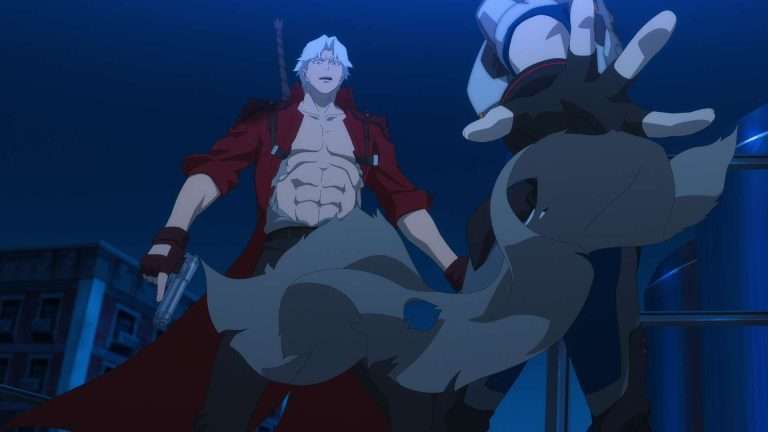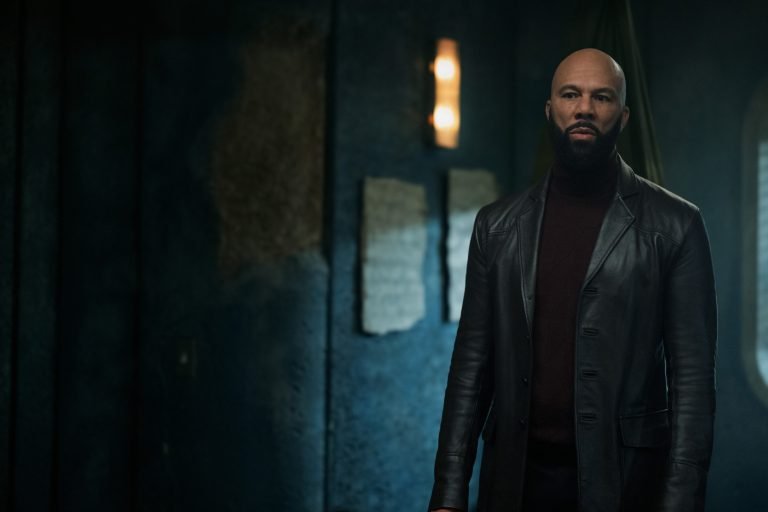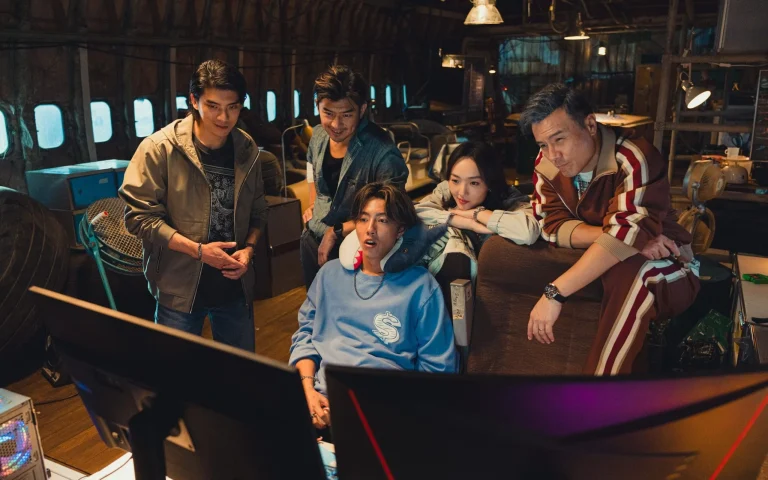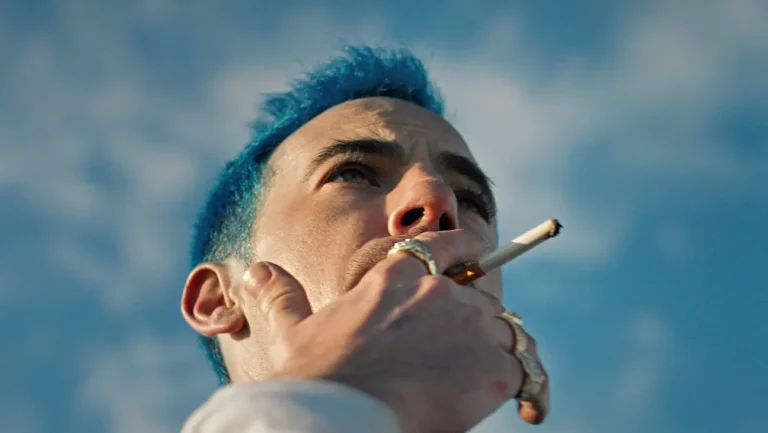“Broken Rage” (2025), an action comedy movie by Takeshi Kitano, AKA Beat Takashi, is an exercise in style. It follows the story of an aging contract killer who is offered an ultimatum in exchange for his freedom. The first half of this hour-long film is told in the form of a thriller, while the second half repeats that same story but retells it in the form of an absurdist comedy.
Broken Rage (2025) Plot Summary & Movie Synopsis:
Broken Rage
The first half of “Broken Rage” (2025) shares the same eponymous title. It follows an aging hitman named Mouse, who enters a cafe, greets the maitre’d, and sits down to have coffee while going through the envelope delivered for him by the mysterious, Mr. M. He takes the envelope to his apartment, walks up the stairs, and then opens the envelope to find the photo of his first target and the location where he would be located.
The scene then transitions via the photo to the scene where the target, enjoying his time at a nightclub, is visited by Mouse, suited and wearing sunglasses, who shoots the women accompanying the target before shooting him point-blank. Mouse then walks out, utterly calm, removes his dress, and stashes it in the ice cream cycle that he cycles calmly while dressed as a vendor.
A similar situation occurs, with Mouse getting his second target—this time a yakuza gangster at a gym on top of a five-star hotel. Mouse disguises himself as a member of the gym, exercises with the man, and then disguises himself as one of the staff and chokes his target out at the swimming pool while his target is submerged and then calmly walks out.
However, in Kitano’s world, even an efficient hitman like Mouse is always at risk of being recognized. Mouse is arrested as one of the chief suspects in the murder when he returns to the cafe for details on his next target. At the Okoya Minami Police Station, witnesses from both crime scenes would be called in to identify Mouse from a lineup, and while they waver, they are reasonably sure that Mouse is the murderer.
When questioned and intensely interrogated by the two detectives, Mouse doesn’t budge, even though it is pretty evident he is trapped as the master at the cafe has come forward as the witness for the investigative team. Perhaps realizing that Mouse agrees to the proposal of the detectives to go undercover. Following their plan, Mouse disguises himself as a contract killer, and gets into a fight with an undercover agent disguised as a customer at a bar where the gang hangs out, and his fighting skills impress Tomita, the capo of gang boss Kaneshiro.
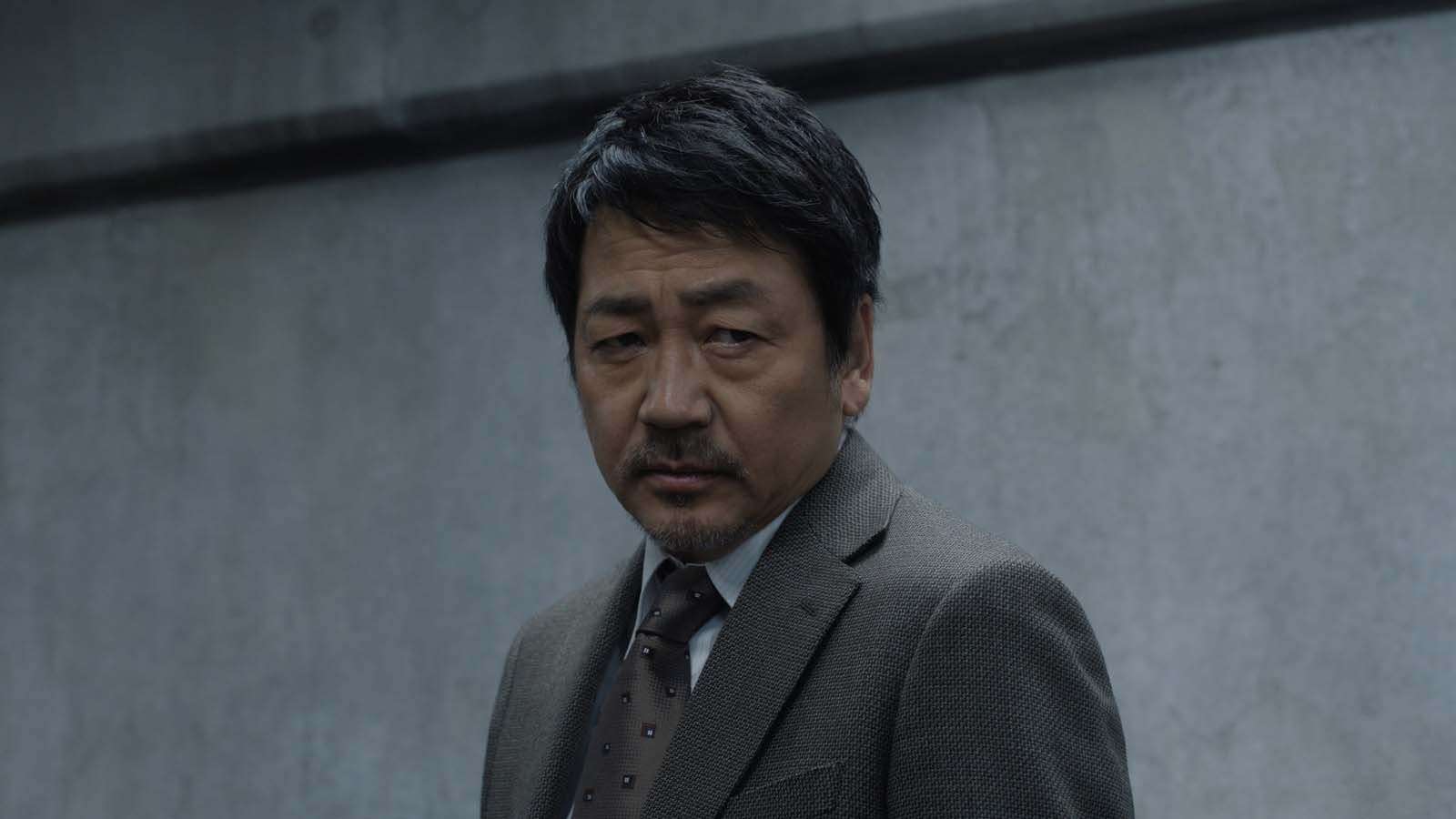
Tomita hires him to be the bodyguard of Kaneshiro, where Mouse fits in like a very sharp glove, utterly ambivalent about being murderous, killing an apparent assailant by shooting him point-blank, irrespective of injuring all the other gang members guarding Tomita. He would excuse himself from Tomita’s displeasure by pointing out the weapon hidden in the holster of the apparent assailant.
However, the successful integration of Mouse in the gang isn’t moving forward regarding their involvement in drug deals. The detectives supply him with heroin laced with “other shit,” which interests them because they believe another competitor is infringing on their turf. Unbeknownst to them being spied upon by the detectives, Kaneshiro plans to confront the supplier Tamura, and Tomita agrees. Tomita and Mouse forcefully enter Tamura’s turf, where Mouse, true to his nature, shoots the guards without compunction before Kaneshiro finally confronts him and decides to contact the supplier and buy the product again to understand whether the contamination stems from the source itself.
At their meeting place, the real deal is exchanged, with the gangsters unable to understand how the contamination had occurred. The next morning, the ratification of the deal would occur, and Mouse, wired up with the help of the detectives, goes into the meeting room where the deal took place. Once the deal is executed, the detectives storm the hotel with backup. As the gangsters are caught red-handed, Mouse is presumed to be killed, and the gangsters are finally arrested and taken away. At the end of the “movie,” Mouse reveals himself to be alive but also pleased with his death being common knowledge, as that fast-tracks him to freedom from the deal hatched by the detectives.
The Spin-Off
The second act is essentially a cracked mirror version of the first act of the film, where each scene is made either foolish or further heightened. In the first case, the hitman takes the envelope, but his chair collapses. As he climbs the stairs to his apartment, he falls on the wet stairs. When he goes to execute his first target, he pulls the gun from his jacket back to front, realizing his mistake, and shoots in a similar fashion before realizing the end of the gun is hot and sauntering away.
In this spin-off, he hasn’t planned his escape very well and only takes one of the marathon tags hanging at the fences and runs back with his clothes tucked under his arm. As a screw-up version of the same character, he tries to burn up the paper and envelope containing the details of the target, along with the marathon tag, but he doesn’t count on the fire ballooning and having to cry out for help.
The next morning, the injured Mouse goes back to the cafe, sits on the collapsing chair again, and tries to open his locker at the train station only to realize the package, unlike the first act, is a massive heavy bag that he drags to his room, and starts to read through the mission parameters, only to find a man hiding beneath the holdall, opening the bag up, and dictating the details of the mission before walking out of the apartment.
The next morning, the second mission again is executed in a skewed manner. It’s almost hilarious how Mouse tries to replicate running on the treadmill and falls out of it once it gets out of control. Then he kills the wrong gangster and confidently walks out of the hotel. The next morning, the police arrest him, only this time it’s SWAT armed with riot gear, led by the same strange man that had been hiding in the holdall the previous night and had walked out of Mouse’s apartment.
Also Read: 5 Essential Takeshi Kitano Movies
Running time Filler
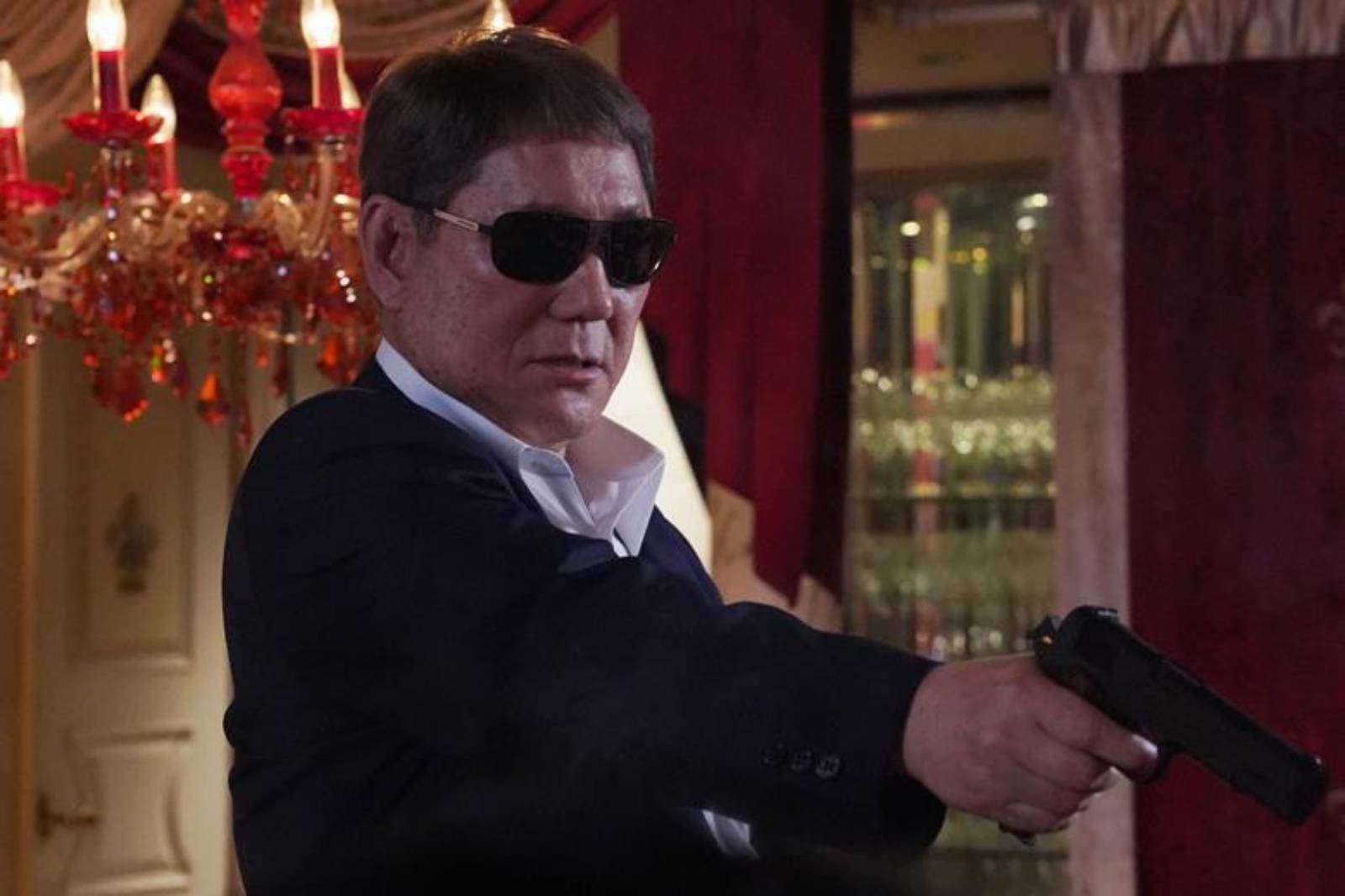
To further add a sense of meta-narrative to the proceedings, the viewers see a line of texts of imaginary live streamers watching the movie and trying to figure out whether the runtime of the movie is too short, or whether this is all an elaborate prank.
The Spin-off (Continued)
Mirroring the events of the first act, the lineup is ridiculous because it is so obvious considering the people taken as suspects don’t follow any set pattern, and thus he is identified very easily. The interrogation sequence also is very ludicrous, where the procedure to break the hitman and ensure his support entails a bizarre sequence of one of the detectives trying to swallow a sword, or doing a five-finger fillet, or a sequence of one of the detectives trying to stab the other, all to ensure his support. There are even moments where Yoshida, the maitre’d of the cafe appears out of nowhere when he is referenced by one of the detectives, and even dresses up like a bat for half a second.
There is a running gag in this situation where the plan to ingratiate with the gang is taken so literally that Mouse sometimes wears a luchador mask. The plan to fight with a customer fails because the customer is scared of Mouse and walks out, and Mouse waits throughout the night at the bar trying to get the attention of Tomita, only to finally attain it at the end of the night, and being hired because he doesn’t have a place to sleep.
The gang members are mostly idiotic and spend time slacking off, a situation that had been a subject of criticism in the first act because the death of the moneylender had led to the loss in profits. In the spin-off, these are all laissez-faire. In the garage, he manages to shoot the apparent assailant, except that is by mistake, and he believes he had shot the person because of the cell phone company being Samsung.
The meeting with the detectives the next morning, where the detectives provide him with heroin, provides an added layer of ridiculousness, where Mouse actually tries to sell the heroin to a customer. While Mouse tries to convince the leaders of his gang, the detectives spy on essentially a comedy skit at the apartment next door. There is a high possibility that my lack of knowledge about the cultural specificity of a lot of these skits hinders my explanation, but the shallow nature of the skits – the physical comedy – powers me through.
The weirdest segment is when Tomita and Keneshiro go to confront Tamura. The sequence of Mouse shooting the guards and threatening Tamura at gunpoint, results in all the gangsters in the room being held at gunpoint in a bizarre circle, which then suddenly transforms into a musical chair sequence. The winner of the musical chair sequence is Kaneshiro and Tomita, and the confrontation with Tamura stems from him breaking the musical chair trophy. The meeting of the Taneshiro with the suppliers results in a collision with the cars due to the darkness, which finally transitions to another filler moment where the viewers are slowly warming up to the fact that this entire act is a bit, while obvious protestations too exist in conjunction, especially the lack of car stunts.
Broken Rage (2025) Movie Ending Explained:
Who is M?
What is surprising is that even as this act culminates in an idiocy-infused gag and yet repeats the beats of the first act, the arrest of Tomita and Kaneshiro results in a couple of revelations. Firstly Tomita, disguised as Capo is actually the true leader of the organization, while Kaneshiro is the face. The end of the second act also reveals that the detectives had figured out the true identity of Mouse’s employer, the mysterious M, who is revealed to be Tomita, and Mouse had been utilized for this secondary aim as well.
What is the Spin-off and off?
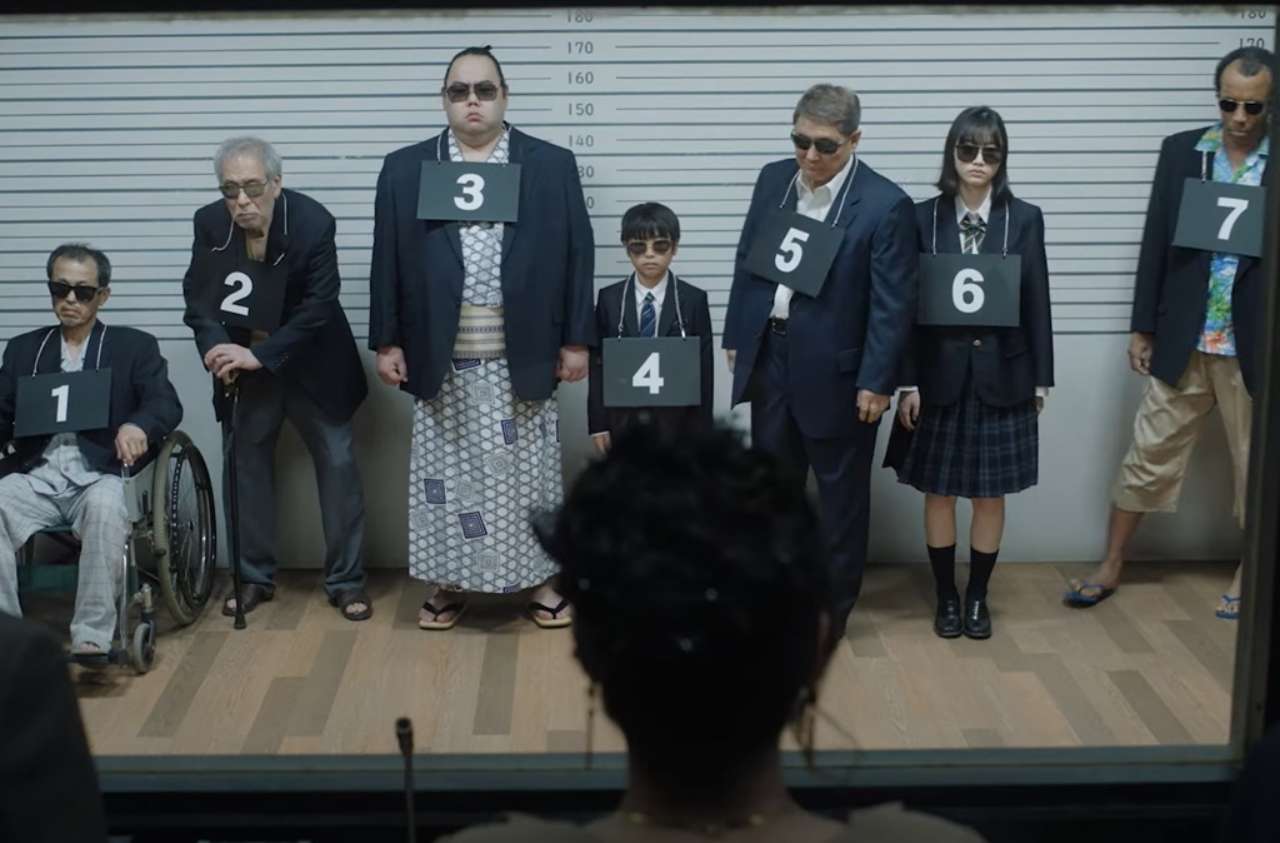
There is also a “third act”, or one can point it out as a post-credit scene, where we see another deviation from the first act, with the “movie” starting again, until the screen is inverted, and then we see Mouse entering the cafe, only to slip and fall flat on the floor, evidently killing himself.
Will there be a Broken Rage 2?
Extrapolating from the impish tonality of this film, which is essentially two episodes and experimenting with perspectives of one singular feature by changing genres, there could be a “Broken Rage 2” if Kitano’s imagination is allowed to run wild. On the other hand, the choice to craft spin-offs seems to be Kitano’s pointed commentary on sequel-ization and the obsession of fans with multiple cuts of the same film. Thus, from that perspective, there is a high possibility that there won’t be a direct narrative sequel to “Broken Rage.” There could be another formal genre experimentation by Kitano in the vein of “Broken Rage,” and that’s a bizarre tonal juxtaposition that I would be welcome to witness.
Broken Rage (2025) Movie Review:
This is essentially Takeshi Kitano, AKA Beat Takeshi, giving us an unfiltered view into both aspects of his creativity—the sleek and intense stylization of the Yakuza films and then his idiotic, almost screwball type of comedy. A movie running just over an hour, it is divided into three parts, with added fillers in between.
The first 28 minutes is the source—a story of a contract killer named Mouse (Takeshi Kitano), who is discovered to have been involved in two assassinations and then hired by the police to go undercover within the yakuza and help the police catch the gang in the act. It is stylish, short, and brutal, but there are moments of strange idiosyncrasy that seem out of congruency until you realize the experimentation at play.
The second act, titled “The Spin-off,” is essentially the absurdist take on the same material. Here Kitano takes not just his character but also individual scenes involved within the same narrative and changes the perspective to ridiculous screwball comedy, resembling a heightened cartoon. It works precisely because the movie is short enough for one to remember the original events, and thus the striking deviation heightens the ridiculousness and the comedy further, as Kitano pushes the comedy into further absurdism.
By splicing in moments of the black screen with text bubbles of viewers voicing their opinions, Kitano tries to highlight the melting pot of the viewers and their methodology in understanding and acknowledging a film’s intention. It allows for the film’s experimental ethos to further become metatextual, albeit indulgent as well.
It’s extraordinary how much the control on tonality for Kitano as a filmmaker never relaxes, be it in the Yakuza or the comedic territory. It also emphasizes the conviction over physical and absurdist comedy that Kitano has, which allows him to deviate from the material without any compunction. This also highlights the experimental take on the material, where the emphasis on style essentially ensures the substance isn’t given too much focus. One can also read this as Kitano’s commentary on the obsession with alternate takes on the same material—be it for director’s cuts of the same film or the obsession with multiverses in superhero films.





